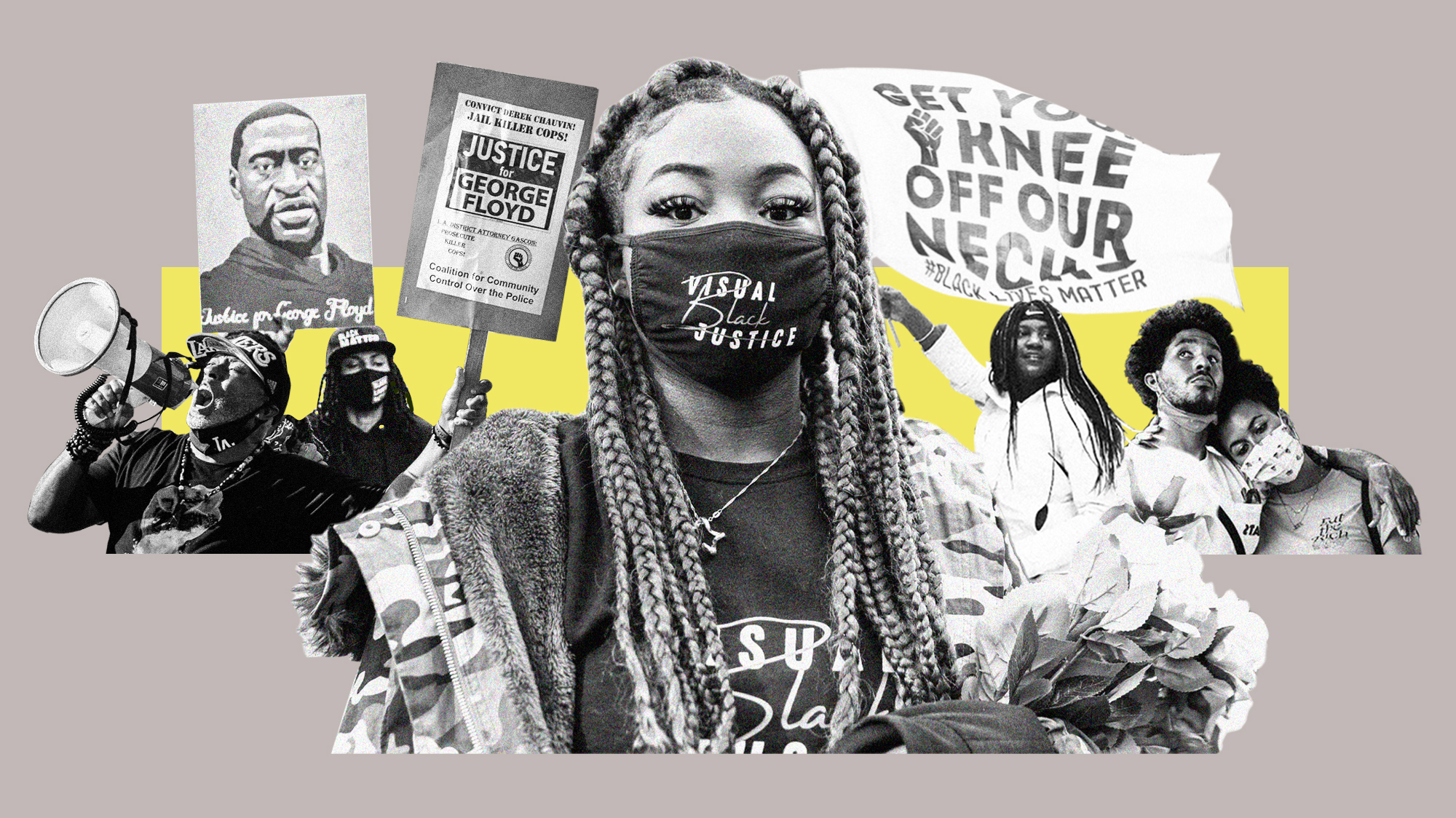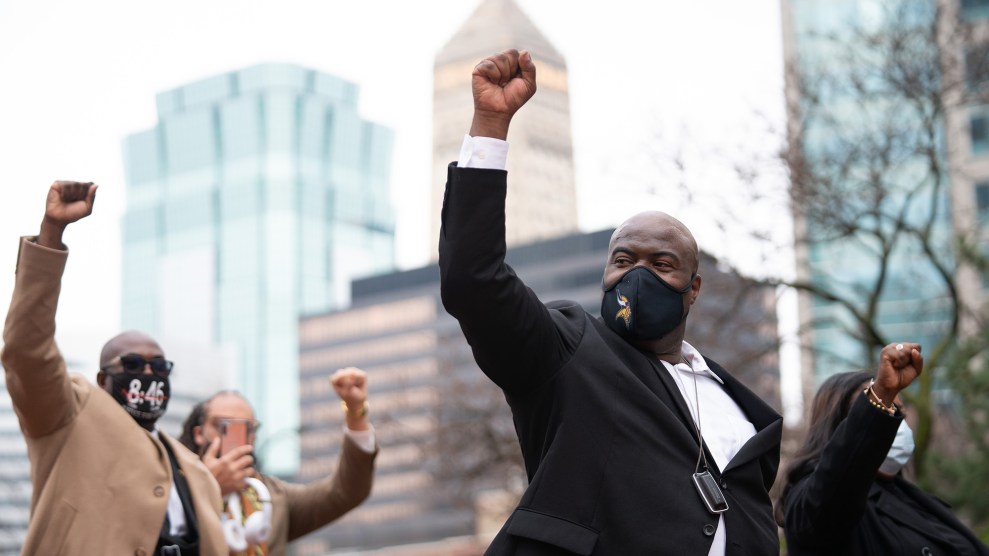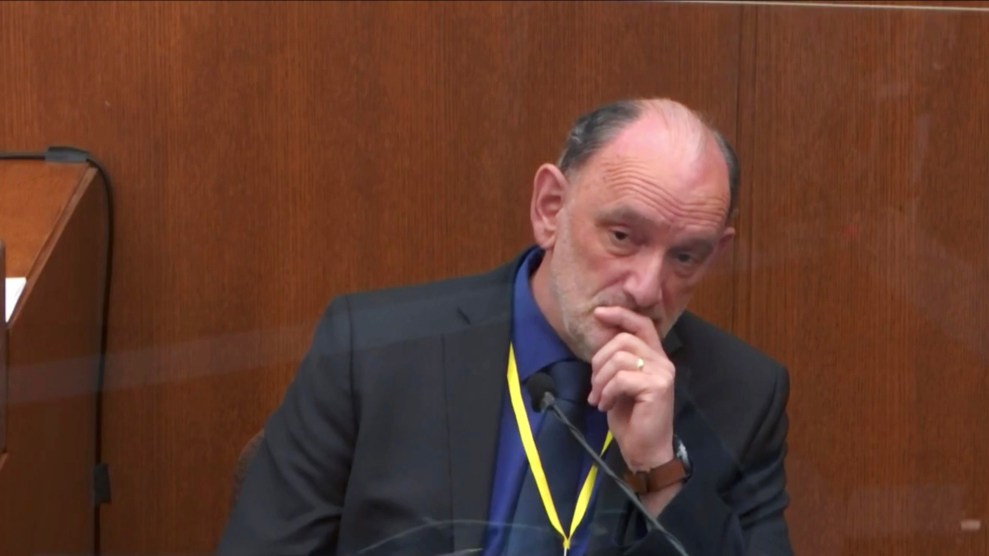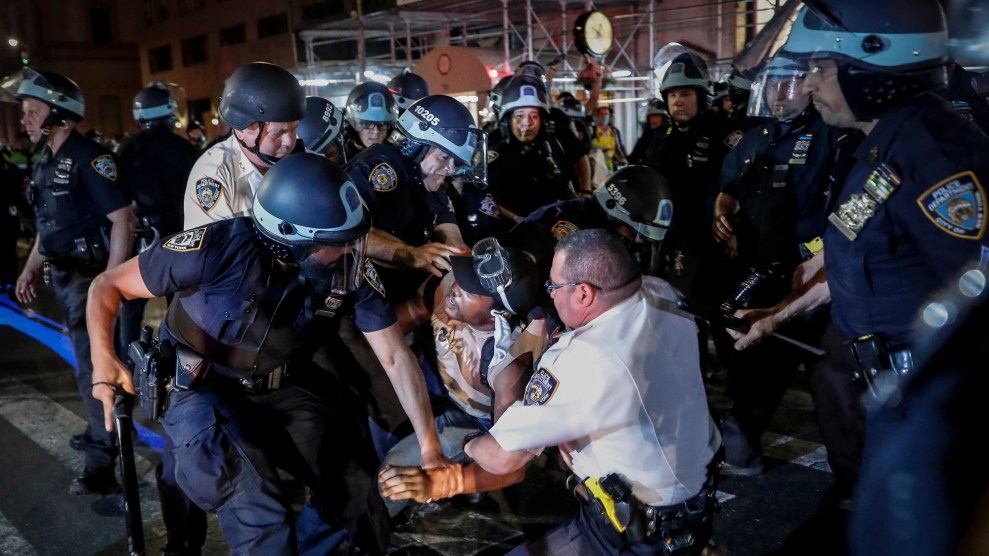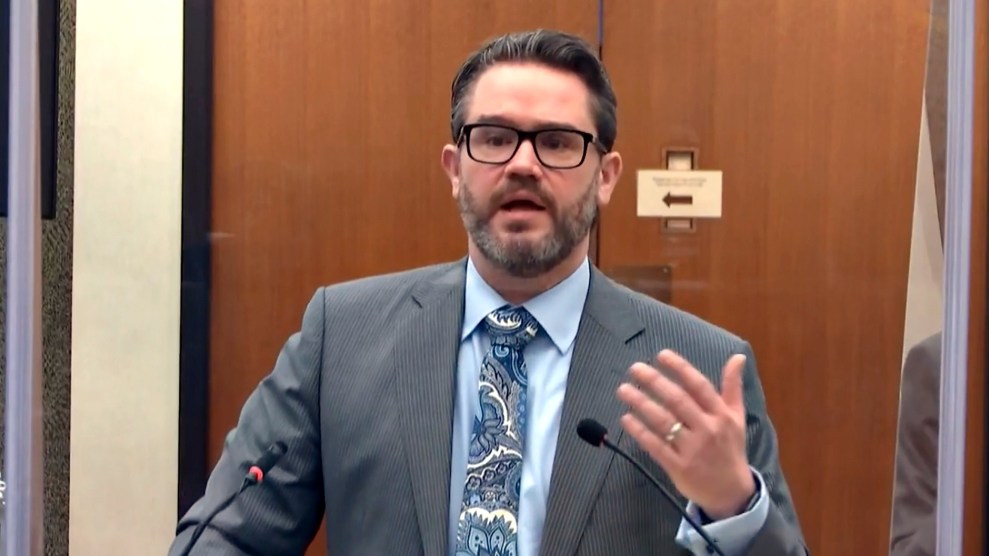This week in Minneapolis, white police officer Derek Chauvin was found guilty on three counts for the murder last May of George Floyd. Repeatedly, the jury saw the recording of the 19-year veteran of the force kneeling on Floyd’s neck for nine-and-a-half minutes, following his arrival on the scene after Floyd had been arrested for allegedly passing a $20 bill. The fact that there was such compelling video evidence was rare. The fact that Chauvin stood trial was rare. The fact that other police officers testified against one of their own was rare. And the guilty verdict was rarer still. Between 2006 and 2017, Minneapolis-area police shot and killed four people. The only police officer to stand trial and get convicted was Mohamed Noor, a Somali cop who had killed Justine Damond, a white woman.
I watched the livestream of the three-week trial from the moment when Judge Peter Cahill gaveled the court into session on March 29, to the moment Chauvin, now a convicted murderer, was led out in handcuffs on April 20. Like other viewers, I couldn’t see jurors or any of the child witnesses, but I became familiar with Chauvin’s lawyer Eric Nelson, a slate of Minnesota state prosecutors, Judge Cahill, and dozens of witnesses that included police officers, medical experts, and the bystanders from the day of the incident. For some, this trial represented a momentous moment for policing reform and massive forward momentum in the fight for racial justice. “I would not call today’s verdict ‘justice’, however, because justice implies true restoration,” Minnesota Attorney General Keith Ellison said in public remarks after the verdict was announced. “But it is accountability, which is the first step towards justice.”
Yes, what took place was important, but not because it signaled a new era of policing. After all, two high-profile police shootings took place as the trial was going on. Nor would what happened in Minneapolis transform police departments across the country. Instead, what was so striking about the Chauvin trial and what followed was how it underscored so many cherished white American myths: about the police, about the superpowers of Black people (both well-intentioned and not), and about the fundamental benevolence of the white power structure that perseveres in this country. No matter how extraordinary some aspects of what transpired in the courtroom were, many of the essential values that keep the system in place were only propped up during the trial and in the aftermath of the verdict.
The Minneapolis police department was not on trial, we were repeatedly told, only Officer Derek Chauvin was. But still, it was impossible to divorce the trial of a police officer from policing itself. Each video of a police officer shooting, beating, or choking a Black man to death, is first followed by requisite expressions of concern and then the same old refrain: Who will you call when you need help? You may complain about the police, but what will you do when you’re being robbed or assaulted?
Black people don’t have to die to feel the weight of the police on their backs. There are always traffic stops, being ambushed because you “fit the description,” and getting followed in a convenience store. Black neighborhoods are underfunded and overpoliced, our very existence deemed a threat. There is no amount of fancy jobs, or degrees, or “good” families that can change that. A police officer once followed me from a grocery store parking lot to my apartment. It was broad daylight in a North Carolina college town. I didn’t speed. I didn’t swerve. I came to a complete stop at each stop sign and was very generous with my turn signal. From the moment that I noticed him, until I arrived at home I could feel my anxiety mounting. Once I parked, he was forced to keep driving. My experience was not one of being protected or served.
But least I’m still alive.
There is no official record keeping of how many people the police kill, but outside groups like Mapping Police Violence and the Washington Post maintain a database and have found that since 2005, the police have killed about 15,000 people. Several of the names of the dead are widely known: Michael Brown, Tamir Rice, Sandra Bland, Philando Castille, and Breonna Taylor. New to the list is Ma’Khia Bryant, the 16-year-old girl who was killed by police in Columbus, Ohio, at the same time that the Chauvin verdict was being read. But the vast majority of the victims will remain unknown to anyone but their grieving family and friends. Any acknowledgement of their deaths appear as statistics in a brutal system, examples of how too frequently armed agents of the state are trained to treat Black people as a threat.
In reality, police spend a small fraction of their time solving crimes, most of their work is responding to non-emergency calls and traffic enforcement. The rhetorical question about who to call in an emergency—the perfect mix of condescension and ignorance—is usually delivered by someone ensconced in privilege, unquestioning in their commitment to the myth that the police are here to protect and serve. What gets lost in that particular narrative is that from its inception, policing has also been about protecting, maintaining, and elevating whiteness.
Policing in the United States had its genesis with Southern slave patrols which varied from state to state. Sometimes they were appointed by local governments and were generally comprised of white men of any class keeping watch over enslaved people to ensure they weren’t trying to escape—anyone caught off of the plantation without permission was subjected to terror and violence by these authority figures. After the Civil War, those slave patrols became embedded in the criminal legal system as judges, prosecutors, and police officers.
During Reconstruction, which saw horrifying racial violence, white police officers would riot at even the slightest hint of Black progress, which is what occurred in the Memphis Riot of 1866. After the Civil War, Black veterans and their families settled in Memphis, Tennessee. White police officers, many of them new Irish immigrants, were displeased with their presence. The massacre began when Black soldiers and their families started an impromptu street party. City officials told police to break up the crowd, but the Black families refused. Soon, a full-scale brawl between Black soldiers and white police officers broke out. After a few hours, the soldiers returned home and peace was seemingly restored. But white vigilantes had caught wind of the incident and descended upon the Black community. By the end of the white rampage, 46 Black people were dead and dozens more were injured. More than 100 had been robbed, five Black women had been raped, and churches, homes, and schools were left in ruins.
In the Jim Crow era police enforced the Black Codes, discriminatory laws targeting Black people that kept a whole group of American citizens threatened and segregated. Throughout the Civil Rights Movement, prominent leaders were attacked and jailed by police, or just attacked by vigilante groups. When the use of racial slurs became less acceptable and de jure segregation ended, powerful whites invented dogwhistles about crime and urban neighborhoods to put a palatable face on Black subjugation. Police officers aren’t perpetuating the racial caste system, they’re just protecting suburban women from those scary criminals—as former president Donald Trump frequently reminded his fans at rallies.
Today, police forces are more diverse, and dozens of them have been subject to federal government oversight. Many have enacted new use of force policies, undergone training for racial bias, and launched endless programs intended to improve community relations. There’s just one problem: Some police officers cannot stop killing Black people.
From the opening statement to the start of jury deliberations, Nelson’s case rested on a depiction of the terrifyingly powerful Black man—the supernegro. The supernegro has been a reliable fixture in American mythology for hundreds of years. When Black people were enslaved, white owners believed that the subjugated people were impervious to pain and unafraid of death and the consequences of physical violence. After slavery officially ended, writers took great pains to describe Black men as near monsters, capable of untold horrors. “The [B]lack brute is lurking in the dark, a monstrous beast, crazed with lust,” North Carolina university administrator George T. Winston wrote about Black men. “His ferocity is almost demoniacal.”
Nelson wasted no time with euphemisms. In his opening statement, he told the jury about the differences in height and weight between the man who was on trial and the victim: Chauvin is 5-foot-9 and 140 pounds. Floyd was 6-foot-3 and weighed 223 pounds. Even though Floyd was handcuffed, pinned to the ground, pulse growing fainter, he was still capable of overpowering his assailant. Nelson told the jury that just because Floyd wasn’t actively resisting arrest, that didn’t mean he couldn’t go from zero to 60 in the blink of an eye. A supernegro is always a split second away from violence and aggression. It just might resonate in a country that has recategorized Black anger, fear, and vulnerability into aggression. Nelson attempted to frame Floyd’s death not only into an attack on Chauvin, but to exploit any unconscious but deeply experienced racist fears of white people generally.
Studies have shown that people of all races perceive Black people as being stronger and more aggressive than the reality. It’s what white police officer Darren Wilson insinuated when he shot 18-year-old Michael Brown to death in Ferguson, Missouri, in 2015. He was charged for the killing too, but was cleared by a grand jury. Even Black children, like 12-year-old Tamir Rice, are frequently mistaken for adults. Ma’Khia Bryant, who was just a girl, was holding a knife when police arrived. The combination of the knife and her Blackness probably rendered her childhood invisible to the police who responded.
Not only did George Floyd need to be restrained because of his alleged aggression and allegedly overwhelming physical strength, so did the crowd of bystanders, who constituted a sort of collective supernegro. The bystanders who filmed Chauvin, while begging for him to remove his knee, became another example of Black aggression—no matter how appropriately upset they were. Nelson repeatedly emphasized how their swear words and screams were threats to the cops on the scene. Nelson wanted the jury to believe that the crowd that had gathered, forever traumatized from witnessing a murder, essentially forced Chauvin to press his knee into Floyd’s neck until his body went limp. Look what you made me do! The majority Black group of people, which included children, became an unruly mob, in much the same the way as conservative media had framed the racial justice protesters who came out in droves in the aftermath of Floyd’s death.
Earlier in the trial, while the jury was listening to witness testimony, just ten miles away in Brooklyn Center, Minnesota, white police officer Kim Potter fatally shot Daunte Wright, a 20-year-old Black man, during a routine traffic stop. Wright was initially pulled over for expired license plates. The proximity of their deaths left the community reeling and demonstrators took to the streets. They were met with more tear gas, more arrests, more police violence. While a demonstration was taking place, Rep. Maxine Waters (D-Calif.) became a different kind of supernegro. She told the protesters to keep fighting. “We’ve got to stay on the street. And we’ve got to get more active,” she said. “We’ve got to get more confrontational. We’ve got to make sure that they know that we mean business.”
In a world where every Black emotion is considered dangerous, her words were a call to action. After the jury went into deliberations, Nelson told the judge her comments constituted a “threat” against the sanctity of the jury and urged him to declare a mistrial. The judge denied the request, further inflaming white conservatives who have targeted Waters for years, but he conceded that perhaps the representative’s words could provide fodder for a successful appeal.
Even well-intentioned people deploy their own version of the supernegro myth. No sooner had the jury convicted Chauvin in all three counts, did Speaker of the House Nancy Pelosi seize the the opportunity to comment on the legacy of Floyd’s death and the subsequent guilty verdict. No, this wasn’t simply a repudiation of one man’s actions. Instead, she offered a redemption story, imbued with quasi-religious imagery. “Thank you George Floyd for sacrificing your life for justice,” she said at a press event. “Because of you and because of thousands, millions of people around the world who came out for justice, your name will always be synonymous for justice.”
Excuse me? Now, with the guilty verdict pinned to his murderer, George Floyd has become a sainted martyr for the larger cause? Let’s be clear: George Floyd did not “sacrifice his life.” He was not some holy figure who died so that Good White Liberals can declare that justice is done. Carry this flawed logic to its natural conclusion: If something so righteous can come out of a Black man being murdered, why stop killing at all? Floyd’s life, and all Black lives, are worth more than making white people feel good about themselves. It’s the same way America reveres Rev. Martin Luther King, Jr.; his legacy and death have become proof of the progress in the fight for racial equality, even though King was murdered at just age 39.
If the trial itself was the antithesis of what we’ve come to expect in the American justice system when it comes to holding police accountable, for the conservative base the guilty verdict might as well have been the white apocalypse. Newsmax TV host Rob Schmitt said the jury sacrificed Chauvin to the mob, implying that if the jurors had acquitted him, not only their lives but many white lives would be in danger. Republican Florida Gov. Ron DeSantis also suggested that the jury was afraid of “the mob,” suggesting that a guilty verdict could lead to similar protests for racial justice that Floyd’s murder catalyzed last summer. There’s more: According to white supremacist TV host Tucker Carlson on Fox News, this verdict so shook the faith of white people in the justice system generally, no one (meaning no white person) would have faith in it ever again. His guest, author and commentator J.D. Vance echoed those sentiments. “And whatever you think of the Derek Chauvin verdict,” he intoned, “the outcome, like you said, casts a pall over the entire justice system.”
Of course, “justice system” was simply shorthand for much of what many white people unquestionably believe about their beloved country. Cops fear for their lives; Kyle Rittenhouse was just protecting small businesses; there were good people on both sides of the white supremacist march in Charlottesville; and the Capitol insurrectionists were legitimately upset over an election (unless, of course, they were Antifa in disguise). To that they might want to add: Derek Chauvin was just doing his job. But a jury decided that he wasn’t, and that verdict challenged the most dangerous and pervasive myth in America: White violence can usually be justified, especially when the perpetrator happens to be wearing a uniform.
